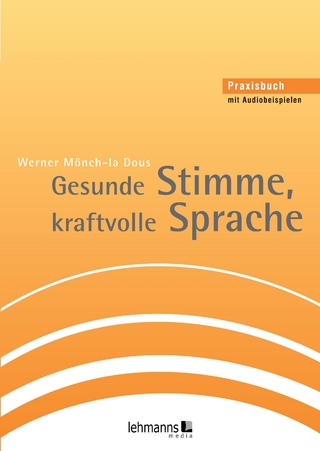
Multiple Exponence
Oxford University Press Inc (Verlag)
978-0-19-046435-6 (ISBN)
Multiple (or extended) exponence is the occurrence of multiple realizations of a single morphosemantic feature, bundle of features, or derivational category within a word. This book provides data and direction to the discussion of ME, which has gone in a variety of directions and suffers from lack of evidence. Alice Harris addresses the question of why ME is of interest to linguists and traces the discussion of this concept in the linguistic literature. The four most commonly encountered types of ME are characterized, with copious examples from a broad variety of languages; these types form the basis for discussion of the processing of ME, the acquisition of ME, the historical development of ME, and analysis of ME. The book addresses some of the most important questions involving ME, including why it exists at all.
Alice Harris works on syntax, morphology, and historical linguistics cross-linguistically and especially in languages spoken in the Caucasus. She received the Bloomfield Book Award in 1998, was designated Collitz Professor for 2011, was named a Fellow of the Linguistic Society of America in 2012, and was elected President of the Society for 2016.
Preface
Acknowledgments
Abbreviation and Conventions
1. Introduction
1.1. What is multiple exponence?
1.2. Why is multiple exponence of interest to linguists?
1.3. Why this book?
1.4. The approach taken here
1.5. How can we distinguish reanalyzed successive markers from ME?
1.6. Conclusion
2. Multiple Exponence in Linguistic Theory: A History of the Inquiry
2.1. Introduction
2.2. Multiple Exponence and the Elsewhere Condition
2.3. Multiple Exponence and the Split Morphology Hypothesis
2.4. Multiple Exponence in Distributed Morphology and Articulated Morphology
2.5. Multiple Functional heads
2.6. Multiple Exponence in Minimalist Morphology
2.7. Paradigm Function Morphology
2.8. Multiple Exponence in Word and Paradigm Morphology
2.9. Optimality Theory and Multiple Exponence
2.10. Breton Again
2.11. Summary
3. Frequently Found Types of Multiple Exponence
3.1. Description of the Database and Method
3.2. Exceptional vs. Systematic ME
3.3. General Characteristics of Four Frequent Types
3.4. Type 1: Dependent ME
3.5. Type 2: Alternating ME
3.6. Type 3: Supporting ME
3.7. Type 4: Subset/Overlapping ME
3.8. ME Involving a Non-Affixal Exponent
3.9. ME in Compounds
3.10. ME in Reduplication
3.11. Discussion
3.12. Summary
4. Psycholinguistic Approaches
4.1. Processing Multiple Exponence
4.2. Acquisition of Multiple Exponence
4.3. The Psychological Reality of Stem Alternation + Affix
4.4. Conclusion
5. Origins of Type 1 (Periodic) Multiple Exponence
5.1. Introduction
5.2. Grammaticalization of Auxiliaries and Determiners
5.3. Auxiliaries that Grammaticalize, Creating Type 1 ME
5.4. Grammaticalization of Demonstratives and Articles
5.5. The Role of Compounding in the Origin of ME
5.6. ME and the Nature of Grammaticalization: Trapped Morphemes
5.7. Additional Discussion and Conclusion: Correlations of Grammaticalization with Type 1 ME
6. Origins of Types 2-4: Alternating, Reinforcement, and Accidental Multiple Exponence
6.1. Introduction
6.2. Literature on the Origins of ME
6.3. "Externalization" of Inflection
6.4. Processes that Lead to Reinforcement, Type 3 ME: Extension and Borrowing
6.5. Origins of Type 4, Accidental ME
6.6. The Origins of ME Are Not Limited to These Pathways
6.7. Loss of ME
6.8. Conclusions
7. Analysis of Multiple Exponence
7.1. Introduction
7.2. Possible Analyses from a Theory-Neutral Point of View
7.3. ME and the Elsewhere Principle: The Problem of Selective Blocking
7.4. Morpheme-Based Morphology and ME
7.5. Inflection of Derived Words
7.6. Realizational Optimality Theory
7.7. Conclusion
8. Explanation
8.1. Introduction
8.2. Affix Adjacency and Affix Identity
8.3. Factors Contributing to Reinforcement of Previously Affixed Forms
8.4. ME and the Order of Affixes
8.5. Why is ME Rare?
8.6. Why Do Languages Not Uniformly Eliminate ME? Why is One Exponent Not Sufficient?
Appendix A
Appendix B
References
| Erscheinungsdatum | 24.05.2016 |
|---|---|
| Verlagsort | New York |
| Sprache | englisch |
| Maße | 239 x 163 mm |
| Gewicht | 550 g |
| Themenwelt | Geisteswissenschaften ► Sprach- / Literaturwissenschaft ► Sprachwissenschaft |
| ISBN-10 | 0-19-046435-6 / 0190464356 |
| ISBN-13 | 978-0-19-046435-6 / 9780190464356 |
| Zustand | Neuware |
| Haben Sie eine Frage zum Produkt? |
aus dem Bereich


